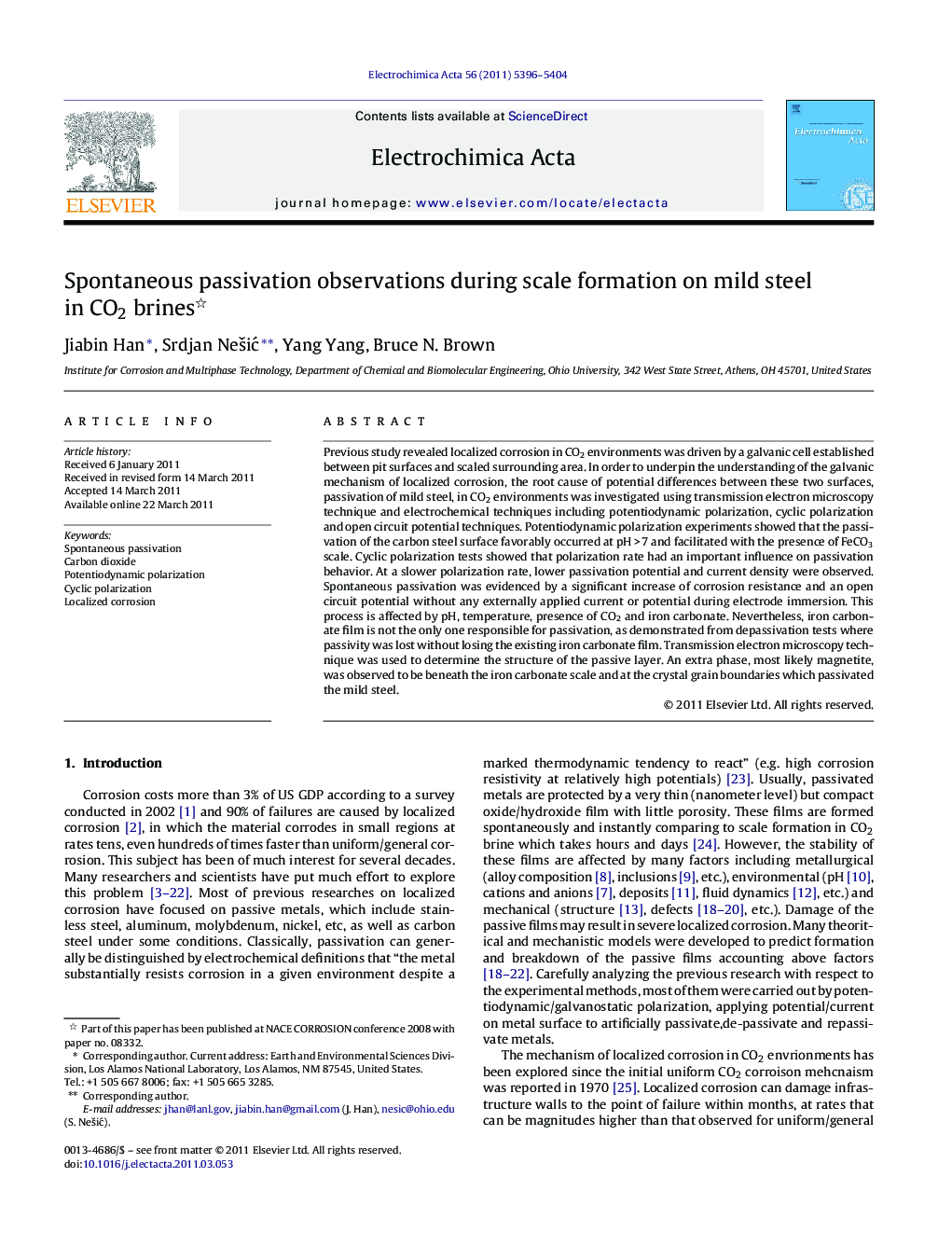| Article ID | Journal | Published Year | Pages | File Type |
|---|---|---|---|---|
| 189796 | Electrochimica Acta | 2011 | 9 Pages |
Previous study revealed localized corrosion in CO2 environments was driven by a galvanic cell established between pit surfaces and scaled surrounding area. In order to underpin the understanding of the galvanic mechanism of localized corrosion, the root cause of potential differences between these two surfaces, passivation of mild steel, in CO2 environments was investigated using transmission electron microscopy technique and electrochemical techniques including potentiodynamic polarization, cyclic polarization and open circuit potential techniques. Potentiodynamic polarization experiments showed that the passivation of the carbon steel surface favorably occurred at pH > 7 and facilitated with the presence of FeCO3 scale. Cyclic polarization tests showed that polarization rate had an important influence on passivation behavior. At a slower polarization rate, lower passivation potential and current density were observed. Spontaneous passivation was evidenced by a significant increase of corrosion resistance and an open circuit potential without any externally applied current or potential during electrode immersion. This process is affected by pH, temperature, presence of CO2 and iron carbonate. Nevertheless, iron carbonate film is not the only one responsible for passivation, as demonstrated from depassivation tests where passivity was lost without losing the existing iron carbonate film. Transmission electron microscopy technique was used to determine the structure of the passive layer. An extra phase, most likely magnetite, was observed to be beneath the iron carbonate scale and at the crystal grain boundaries which passivated the mild steel.
► We observed spontaneous passivation was at pH > 7. A higher open circuit potential was achieved comparing to bare surface or FeCO3 scaled surface. ► Effects of pH, temperature, CO2/FeCO3 on spontaneous passivation were systematically investigated. ► TEM analysis determined the structure and chemistry of the passive film is Fe3O4 instead of FeCO3. ► Root cause of the galvanic mechanism of localized CO2 corrosion is clarified.
